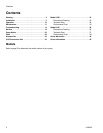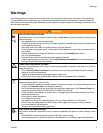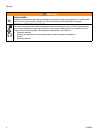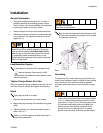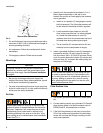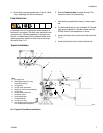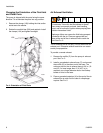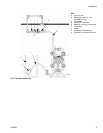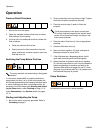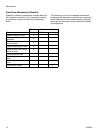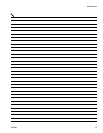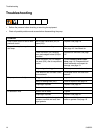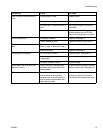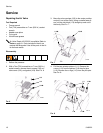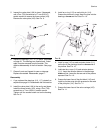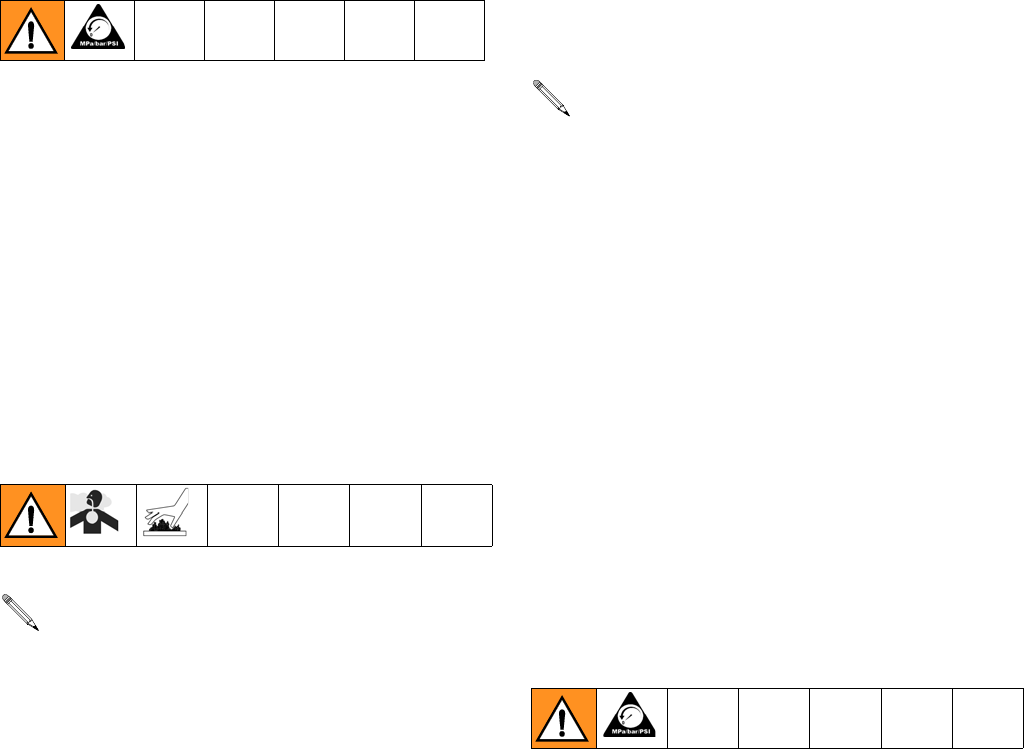
Operation
10 310622L
Operation
Pressure Relief Procedure
1. Shut off the air to the pump.
2. Open any available outbound fluid valve to relieve
fluid pressure from the pump.
3. If fluid is still in the outbound fluid lines, isolate this
fluid as follows:
a. Close the outbound fluid valves.
b. Slowly remove the fluid connections from the
pump, and have a container ready to catch any
fluid that runs out.
Sanitizing the Pump Before First Use
It is the user’s responsibility to properly sanitize the
pump before first use. It is up to the user whether this
will include disassembling and cleaning individual parts
or simply flushing pump with a sanitizing solution. As
necessary, follow the steps under Starting and Adjust-
ing the Pump below, under Flushing on page 11, or
under Disassembly in the Service section on pages
19, 21.
Starting and Adjusting the Pump
1. Be sure the pump is properly grounded. Refer to
Grounding on page 5.
2. Check connections to be sure they are tight. Tighten
fluid inlet and outlet connections securely.
3. Place the suction tube (if used) in fluid to be
pumped.
4. Place the end of fluid hose (L) into an appropriate
container.
5. Close the fluid drain valve (J).
6. Back out the air regulator (C) knob, and open all
bleed-type master air valves (B, E).
7. If the fluid hose has a dispensing device, hold it
open while continuing with the following step.
8. Slowly increase air pressure with the air regulator
(C) until the pump starts to cycle. Do not exceed the
maximum operating air pressure as listed in the
Technical Data section on pages 34 and 37. Allow
the pump to cycle slowly until all air is pushed out of
the lines and the pump is primed.
Pump Shutdown
At the end of the work shift, relieve pressure.
The pump was built and tested using a food grade
lubricant.
If fluid inlet pressure to the pump is more than
25% of the outlet working pressure, the ball check
valves will not close fast enough, resulting in inef-
ficient pump operation.



